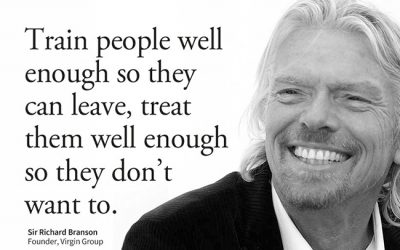Why I Value Thinking Partners
Trusted people who encourage a higher level of awareness increase our capacity to think clearly, to act intentionally, and to lead effectively
As we all transition into a world indelibly changed, much of the conversation around us is about “living in the new normal.” Should we expect more of the confusion and chaotic energy that has permeated much of the past year? Or will we have a foundation of awareness and understanding to build on?
Whatever the answers to these questions are, I want to thrive in that environment. I want to think and act in a way that encourages me to be the person who will do the things that create the life I want to live, and I want people I care about to have the tools to do the same.
This is why, over these past few months, I have separated myself from things and people who invite the chaos and confusion, and I have chosen to focus on those guiding principles I know to be true: fundamental, foundational beliefs not subject to my circumstances. I have also chosen to invest time with thinking partners I trust, people who know me, who understand and support my vision, who will help me stay focused, and who will engage in ongoing conversations that encourage a higher level of awareness.
What is a Thinking Partner?
While the term “thinking partner” is often used interchangeably with “mentor,” there are important differences. In a mentor relationship, one person is seeking a higher level of understanding the other person has achieved. There is a distinct master-student dynamic, rather than a peer relationship.
While both thinking partners and mentors are trusted friends who challenge our thinking and encourage a higher level of awareness, thinking partner interaction is more of a two-way street. Each person contributes wisdom and perspective, actively listens for limited thinking, and offers ideas that help us think bigger and see more clearly. Because of this, each person benefits from the counsel and encouragement of the other.
One of my Thinking Partners, Paul Martinelli, and I talk about unlocking potential.
The Value of a Thinking Partner
When we choose to engage honestly and intentionally with a thinking partner, especially in times of uncertainty and confusion, we put ourselves in the position to view our situation from a different perspective, which often reveals opportunities or issues we might not have seen. This kind of limited vision is common even in less-stressful times, because as we grow accustomed to “What’s Working,” we get stuck in the loop of our own comfortable inner monologue, and we fail to explore other, potentially better ideas.
A trusted thinking partner brings a fresh perspective that helps us build on what we already have or helps us create a whole new approach. Thinking partners challenge our thinking in a way that draws us out of our comfort zone; reveal faulty assumptions, leading to shifts in how we think about ideas, view challenges, and approach solutions; and instigate innovation, creativity, and inspiration.
As we let go of preconceptions and assumptions and allow the mutually-beneficial listening and sharing to work, these interactions lift the lid on our limited thinking and reveal unexplored ideas and opportunities we may otherwise miss. In this way, my thinking partners continue to help me maintain focus, be positive, and stay strong as we all move forward together.
Who are your thinking partners, and how have they helped you?
A version of this article was originally published in the July 2020 issue of Sandpoint Living Local / Coeur d’Alene Living Local.
4 questions to prepare you for your next big opportunity
In recounting stories of their success, people often say that one opportunity changed the trajectory of their life. We hear it all the time: on awards shows, after sporting events, during graduation speeches. Someone, at some point, was presented with an...
5 questions every employee wants their boss to ask
Recently, Forbes published a list of 10 Things Only Bad Bosses Say. While most of us have ‘bad boss experiences’ in the past, so we may relate, this article got me thinking about some of the things great leaders say to inspire and motivate their teams....
What Richard Branson looks for in a leader
Sometimes, as leaders, we feel pulled in two different directions, do we invest our time and energy in our employees or our customers? While it’s easy to say “both,” the reality is, we have limits on our time, so one or the other is going to get more of...
Creating an environment that encourages people to lead
In our most recent blogs, we looked at two different real-world customer service scenarios. In one story, both an employee and a manager fumbled a simple service opportunity that nearly cost them a long-time customer. In the next story, one employee chose...
A leader steps up and saves the deal
In our last blog, I shared a friend’s story of what he called “bewilderingly poor customer service,” that left him wondering why neither the employee nor the manager seemed to know how to fix the problem … or felt empowered to do so. Today’s story begins...
A customer service miscue leaves a lasting impression
In our last blog, we talked about the importance of investing in our team members personally, as well as professionally, and what that means for our organization. In this blog, I want to share a story about what can happen when leadership focuses on skills...








0 Comments